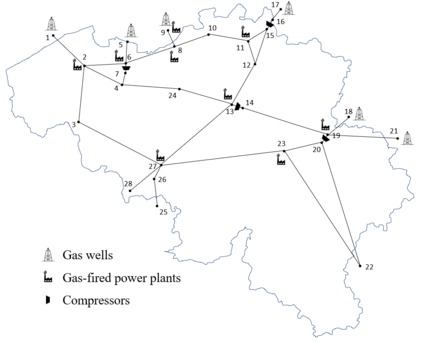The current energy transition promotes the convergence of operation between the power and natural gas systems. In that direction, it becomes paramount to improve the modeling of non-convex natural gas flow dynamics within the coordinated power and gas dispatch. In this work, we propose a neural-network-constrained optimization method which includes a regression model of the Weymouth equation, based on supervised machine learning. The Weymouth equation links gas flow to inlet and outlet pressures for each pipeline via a quadratic equality, which is captured by a neural network. The latter is encoded via a tractable mixed-integer linear program into the set of constraints. In addition, our proposed framework is capable of considering bidirectionality without having recourse to complex and potentially inaccurate convexification approaches. We further enhance our model by introducing a reformulation of the activation function, which improves the computational efficiency. An extensive numerical study based on the real-life Belgian power and gas systems shows that the proposed methodology yields promising results in terms of accuracy and tractability.
翻译:当前的能源转型促进了电力和天然气系统之间的运行趋同。在这方面,在协调的电力和气流中改进非碳化天然气流动动态模型的建模变得至关重要。在这项工作中,我们提出一个神经网络限制的优化方法,其中包括以监督的机器学习为基础的威茅斯方程式的回归模型。威茅斯方程式将天然气流与气流通过由神经网络吸收的四面平等产生的每条管道的插口和出口压力联系起来。神经网络通过一个可移动的混合整数线性程序编码成一套限制。此外,我们提议的框架能够考虑双向,而不必采用复杂和可能不准确的凝化方法。我们通过重新制定激活功能来进一步加强我们的模型,从而改进计算效率。基于比利时实际电力和天然气系统进行的广泛数字研究表明,拟议的方法在准确性和可移动性方面产生了可喜的结果。








